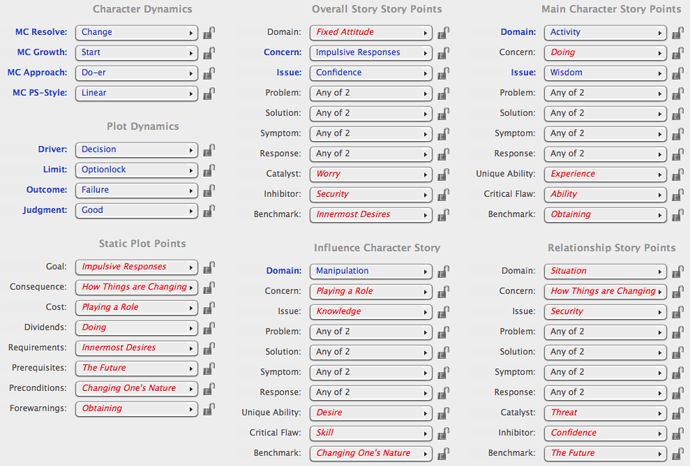I want to write a novel about a guy who invents an alternative monetary system that limits excessive wealth and poverty. It competes and wins from the current fiat money, so it becomes the dominant (and later the only) payment system. But as it turns out, one of the people close to him (the antagonist/IC) finds a loophole and is able to have an unlimited amount of money, despite the system’s limitations. To stop this man, my MC needs to shut down the entire monetary system he invented. The world is left without payment method. Then he discovers that the true value is not in some coins with numbers on it, but in products and services.
So how do I get started with this concept using Dramatica? What is the problem all characters share? That the economy is not and never will be reliable. The lie my MC believes is that he can fix it, but he can’t. That makes my MC domain Activity and the IC domain is Manipulation. Sounds about right.
But how should I go from there? Confidence and Trust are very important in my story. But where should I put them? I could argue that the current economy is not trustworthy and that the response is that they test the new monetary system. I could also argue that they trusted the new coin and it didn’t work out. So where does ‘trust’ go? Is it the OS symptom? Or the response, the problem or the solution?
What do you think?


